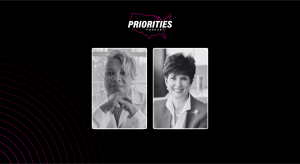Government can successfully embrace consumer concepts like CRM
In the consumer world, Customer Relationship Management (CRM) is a kingmaker technology. Companies like Amazon and Google that have mastered and deployed the deep-diving, data-mining prediction technology of CRM enjoy much higher customer satisfaction than others running without it. With good CRM, customers find the perfect ad placed right in front of them, and store shelves are constantly filled correctly to reflect buying habits. But government, because it doesn’t operate on a for-profit model and generally has no competition, has been slow to embrace CRM. Many agencies don’t even have direct customers, so it’s understandable.
One area, though, where the government exists to serve others directly is in the Department of Health and Human Services. Especially at the state and local level, HHS organizations help those who often can’t help themselves. Yet this relationship isn’t always an easy one. Without CRM, processes are often repeated time and time again for each new customer, even if they all share similar traits and desires. Without demographics and data mining — all solid components of a powerful CRM system — customer service suffers and case workers have to spend more time with each patient, leading to lower service levels overall. Throw in shrinking budgets, and it’s becoming an uphill battle for many HHS organizations at all levels.
But it need not be that way. Microsoft has developed a robust CRM platform for its consumer customers called Microsoft Dynamics CRM. Instead of just using the platform to boost customer sales for its clients, the company is helping to deploy CRM technology in government organizations in some unique ways, as was explained by Marie Huwe, general manager for Microsoft Dynamics marketing, in a recent blog post.
One of the most interesting and inspiring deployments of CRM technology in government is occurring at the Mississippi Department of Mental Health. On one level, the CRM technology is being used to coordinate care and offer predictive outcomes, not unlike what consumer companies are doing with shopping experiences. But what do you do when your customers are unable to speak due to a physical or mental impairment, a real possibility for the DMH?
For that, they worked with a company called CoCENTRIX to create CARETILES, a mobile, cloud-based suite of apps built on the Microsoft Dynamics CRM platform. Patients are shown a set of tiles with pictures and messages running on any mobile device and can select the proper response to questions or express concerns. CRM comes into play because the tiles are populated based on the known needs of the patient and their historical interactions.
“CARETILES is one of the most exciting applications I have implemented,” said DMH CIO James Dunaway. “Our health professionals can conduct assessments based on clearer communications with their patients, and patients can communicate with additional dignity by using the tool. We can also customize the software based on individual patients’ abilities and needs.”
Ohio’s Department of Developmental Disabilities faced a different problem. The state had cut back on funding the program, and the department had to find a way to lower costs while providing the same or better service. CRM came to the rescue again with the implementation of the Imagine system, which helps customers manage their own cases. The system serves up what is needed for each customer so they are not waiting in line or going through processes that have little to do with their basic needs.
“We have lists of people waiting to be served, individuals wait for approval for Medicaid waiver dollars, even if all that person needs is five hours of respite or a ride every Friday,” said Kathy Casagrande, assistant chief information officer for Ohio DODD. “Now, with the Imagine system built using Microsoft Dynamics CRM, we can see those pressing needs and solve them quickly and locally without having to send an individual through a system to get Medicaid approval.”
CRM is just one example where government can take ideas that work in the private sector and reconfigure them to work for government. The excellence of this idea comes not from thinking outside the box but by seeing something good working in other boxes and applying the same processes in a government setting. After all, selling purses and providing medical care are vastly different services, yet the underlying goal of good customer service is universal.





